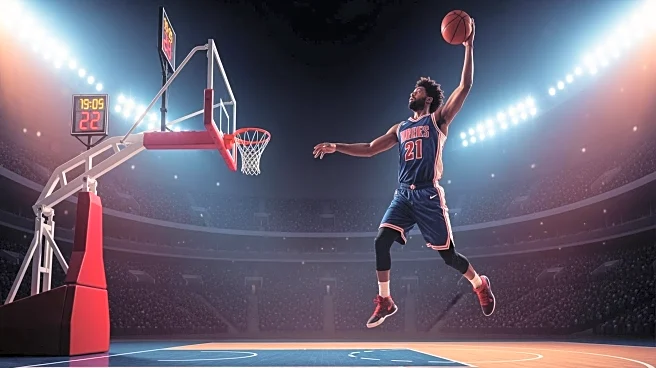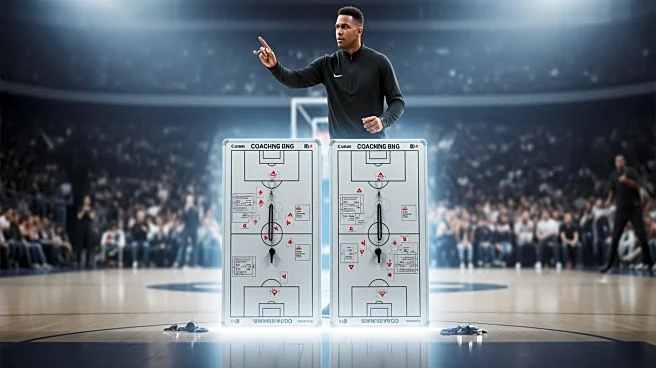What's Happening?
As the 2025-26 NBA season approaches, teams are finalizing their rosters and preparing for training camps. The depth charts for all 30 NBA teams have been projected, providing insights into the expected
rotations and player positions. These charts include details on guaranteed contracts, two-way contracts, and drafted players. The upcoming season promises to be competitive, with teams strategizing to optimize their lineups and maximize performance. The depth charts serve as a crucial tool for coaches and analysts to assess team strengths and weaknesses, and make necessary adjustments before the season begins.
Why It's Important?
The release of the depth charts is significant for several reasons. It offers fans and analysts a preview of team strategies and potential lineups, influencing predictions and expectations for the season. For teams, these charts are essential for planning and decision-making, impacting player development and game strategies. The depth charts also highlight the importance of player contracts and draft picks, which can affect team dynamics and performance. As teams aim for success, understanding and utilizing these charts can be a key factor in achieving competitive advantage.
What's Next?
With the depth charts in place, teams will focus on training camps to refine their strategies and evaluate player performance. Coaches will use these sessions to make final roster decisions and address any gaps or weaknesses identified in the depth charts. As the season progresses, teams may adjust their rotations based on player performance and injuries. Fans can expect dynamic changes and exciting matchups as teams compete for playoff positions and ultimately, the championship.
Beyond the Headlines
The depth charts not only impact team strategies but also influence player careers and market value. Players on non-guaranteed or two-way contracts have the opportunity to prove their worth and secure more stable positions. Additionally, the charts reflect broader trends in the league, such as the increasing importance of versatile players who can adapt to multiple positions. This shift may lead to changes in player training and development, emphasizing adaptability and skill diversity.











